Live Your Bucket List Today! Join the Club Now!
When us Westerners think about having a nice, warm bath at the end of the day, it’s mostly about getting clean. Of course, there’s an element of relaxation – bath bombs and essential oils, for example, are designed to maximise enjoyment while still removing dirt. Ultimately, though, having a bath is just a more luxurious alternative to showering.
Traditional Japanese culture takes a different view. A long soak in hot water is about soothing both body and mind – scrubbing off is reserved for pre-bath showers. Accordingly, public bathing has developed its own unique set of rules, designed to help enhance the near-spiritual tranquility of onsen.
An onsen is a naturally-occurring hot spring, which the Japanese have been using as outdoor baths for centuries. Although the experience has changed slightly to accommodate modern sensibilities, visiting an onsen is still an essential part of a Japanese holiday. It’s here that tourists can experience ancient traditions found nowhere else in the world, and get a taste of truly authentic Japanese culture.
With that in mind, we’ve crafted our guide to onsen etiquette. There are a lot of differences between Japanese and Western culture, so it’s important you nail down the basics before visiting. Let’s get into it.
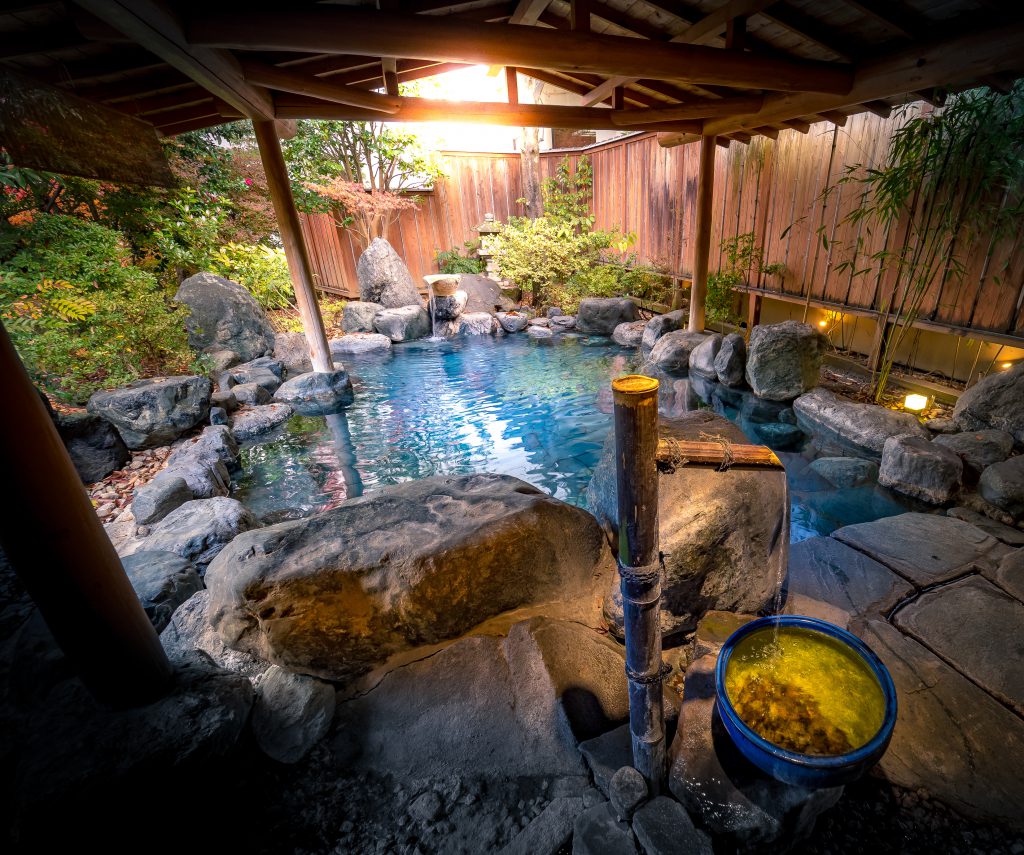
What is an Onsen?
Onsen (literally, ‘hot spring’) refers to the wellsprings heated by Japan’s intense geothermal activity. Thanks to the country’s tectonic plate positioning, there’s literally thousands of onsen scattered across Honshū and its adjacent islands.
Although onsen were traditionally outdoor, public and shared by both men and women, today’s bathing includes both open-air (rotenburo) and indoor (uchiyu) options. Men and women bathe separately, and there are also private onsen available, which can normally be found in ryokan (traditional Japanese inns).
For Westerners, the most alarming part of visiting an onsen is having to be nude! Clothing, swimmers and towels are considered unclean, so virtually all onsen in Japan require that bathers be completed naked.
What Are the Different Types of Onsen?
Onsen are traditionally associated with healing. The heat and buoyancy of the water is supposed to help relax muscles, relieve fatigue and get rid of all those aches and pains. We completely agree! If you’re visiting Japan in autumn or winter, reclining in an onsen is a great way to help revitalise your body if you’ve spent the day skiing or hiking.
That said, not all onsen are created equal. Different onsen have different types of water, which, in turn, are associated with additional health benefits. Although there’s plenty of normal onsen out there (hot springs with less than 1,000 ppm mineral composition), there are also lots of places where you can enjoy mineral-infused waters.
Alkaline sodium bicarbonate springs are said to improve skin tone, while sulphate springs can help with coronary disease. Chloride springs are supposed to improve a weak constitution, while acidic springs soothe a variety of skin ailments – the waters essentially work like a very mild peel, removing old skin and helping new, clean skin shine through. You can find acidic onsen (sansei-sen) near our resort in Kusatsu, Gunma!
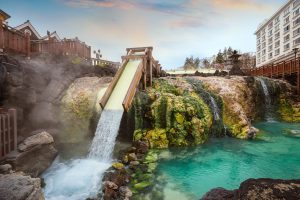
Carbon dioxide springs look a bit like carbonated water. Millions of tiny bubbles boil up out of these onsen, improving circulation for bathers,which in turn acts as a completely natural detox. Forget the diets – just find a carbon dioxide onsen.
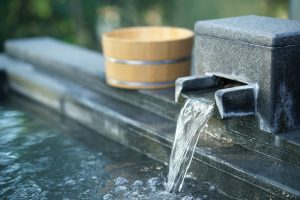
Sulphur springs are one of the most interesting types of onsen. Although the pungent smell can be a bit of a disincentive, the exceptional healing qualities of the waters should be enough to lure you in. They’re said to help heal burns, cuts, gout, hypertension and a variety of skin ailments. Best of all, the sulphur reacting with oxygen turns the waters milky-white, so, if you’re a bit body-shy, a sulphur spring could be a good choice for you.
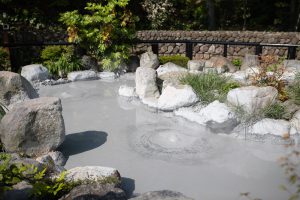
Finally, iron springs, or gantetsu-sen, are onsen with highly ferric waters. The oxidisation of iron particles turns the pools an opaque, brown-red colour, and they’re said to be beneficial for those with low iron levels, as small amounts of iron can be absorbed through the skin.
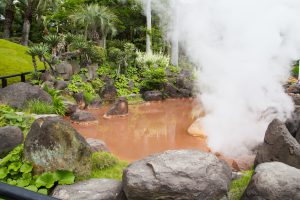
Our Five Tips for Good Onsen Etiquette
Now we know all about the different varieties of onsen, it’s time to explore some basic guidelines for hot spring bathing.

Having a long soak in an onsen is a truly unique, Japanese experience, so it’s important to give it a try. If you’re nervous about your first time, don’t be! Remember, everyone else is in the same boat, and, with the help of these handy tips, you’ll blend right in.
Although you can find onsen virtually everywhere in Japan, a number of our Club Wyndham Sundance resorts also feature on-site onsen or have hot springs nearby. Check out Katsuura East, Hakone, Nasu, Kusatsu and Kawaguchiko for some of Japan’s best bathing experiences! If you’re unsure about how to access onsen or which onsen is best for you, talk to our friendly resort staff, and they’ll point you in the right direction.
Excited for Japan’s most unique holiday experience? Add ‘visiting an onsen’ to your itinerary, and start booking your Japanese getaway today!